Transmission Shafts Explained: Types, Materials, Applications and Manufacturing Processes
- February 19, 2025
- Tony
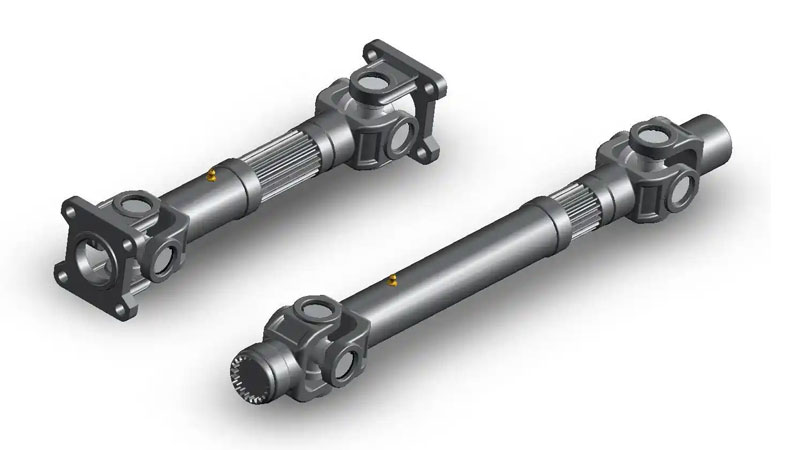
1. Overview
Transmission shafts are critical components in many mechanical systems. Whether in automotive, industrial equipment, or aerospace, it plays an integral role.
What is a Transmission shaft?
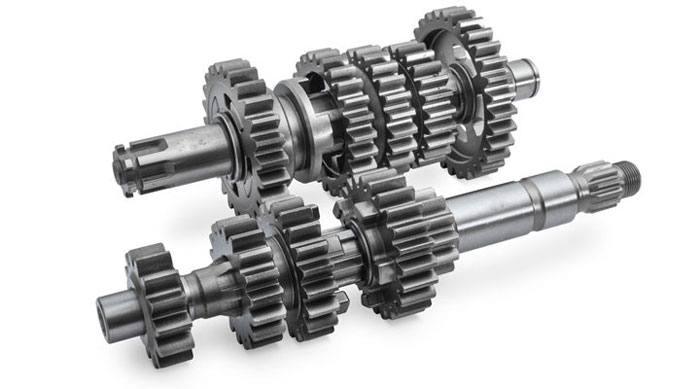
A transmission shaft is a device that transmits power from an engine or motor to other components.
It is usually cylindrical and can transfer power to other parts through universal joints, splines, and other connections to ensure the proper operation of machinery.
How do transmission shafts work?
A transmission shaft transmits torque from one component to another by rotation.
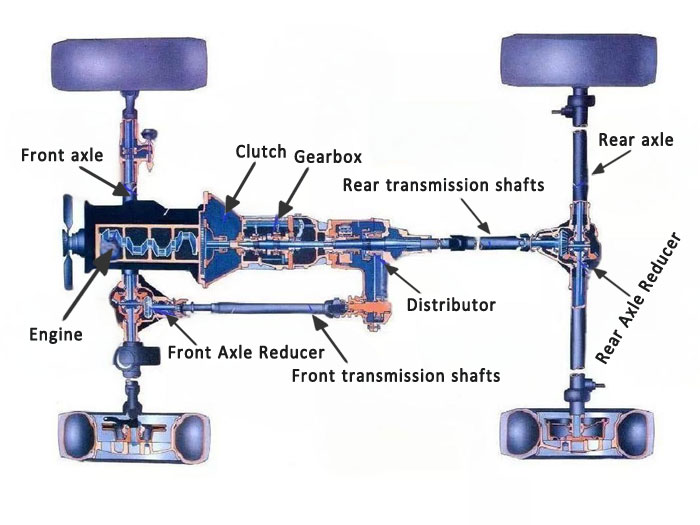
In an automobile, power from the engine is transferred through the transmission shafts to the wheels to drive the vehicle. In industrial equipment, it transfers power from the motor to the working parts to accomplish production tasks. They are designed to operate smoothly and avoid vibration and wear.
2. Components of Transmission shafts
The main components of a transmission shaft usually include the following:
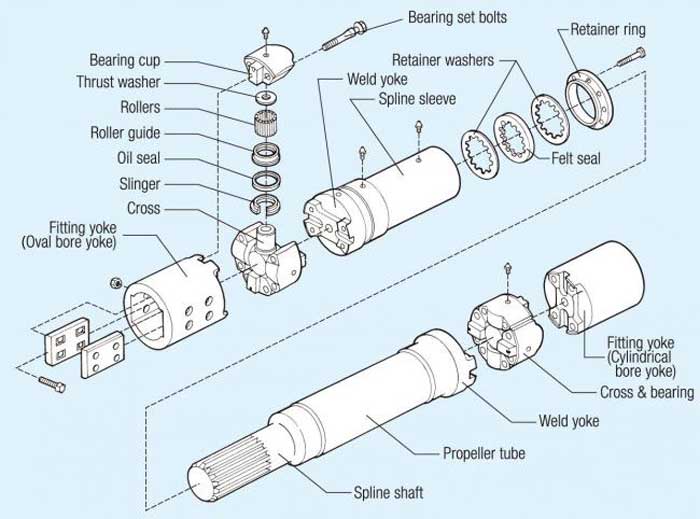
Shaft Tube
The main part of the transmission shaft is responsible for transmitting torque and rotary motion.
Universal joints (U-joints)
Connects shafts at different angles, allowing the transmission shaft to rotate flexibly within a certain angle.
Sliding Fork
Allows the transmission shaft to telescope in the length direction to accommodate suspension movements.
Spline shaft and spline sleeve
Used to connect two parts of the transmission shaft to allow axial sliding while transmitting torque.
Bearings
Act as a support to minimize friction and ensure smooth rotation.
Balancing block
Acts as a balancer to reduce vibration and noise.
Casing:
Protects the housing that supports the shaft components of the drink.
Covers and Caps
Protect universal joints and other components from dust and moisture.
3. Application areas
Automobile and Transportation
Transmission shafts are essential for transferring engine power to the wheels, enabling vehicles to move efficiently.
Industrial Machinery
In industrial equipment, they connect the motor to working parts, ensuring smooth and effective production.
Aerospace & Military
For airplanes, spacecraft, and military gear, transmission shafts deliver engine power precisely to critical components, supporting optimal performance.
Power & Energy
In power generation systems, transmission shafts carry rotational power to generators and other key devices, ensuring reliable energy production.
4. Types of transmission shafts
1. Main Shaft
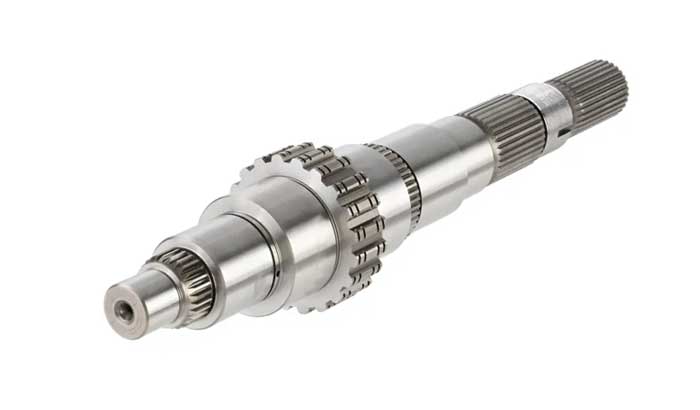
- Definition: A key rotating component that transmits power from a source (like a motor) to other parts.
- Structure: Made of high-strength steel, precision-machined, and often hardened for wear resistance.
- Function: Transfers mechanical power, torque, or rotary motion.
- Characteristics: High torque and speed capacity, requiring high rigidity and precision.
2. Auxiliary Shaft
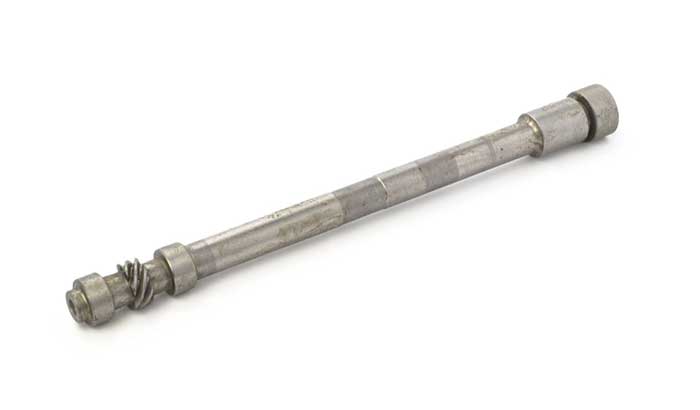
- Definition: A shaft in an auxiliary system that works alongside the main shaft to transmit additional power or support extra equipment.
- Structure: Simpler than the main shaft, with a lower load-bearing capacity.
- Function: Helps with load sharing or powers additional equipment.
- Characteristics: Flexible and often used in more complex systems.
3. Idler Shaft
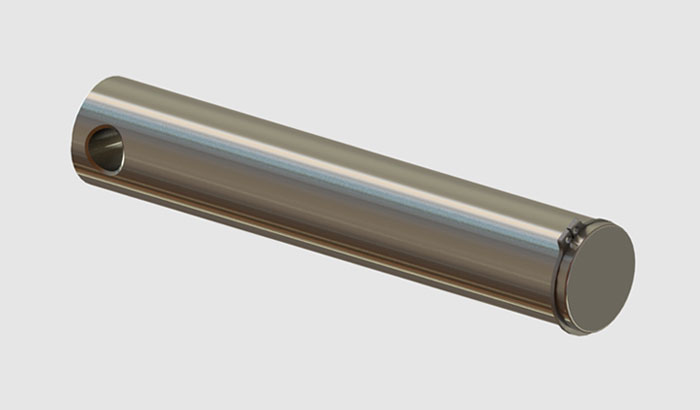
- Definition: A shaft that transfers motion without transmitting power, typically paired with an idler pulley.
- Structure: Simple, often with several drive wheels or chains.
- Function: Changes the direction of motion or adjusts the transmission ratio.
- Characteristics: It doesn’t carry power, only movement, and has a simple design.
4. Reverse Shaft
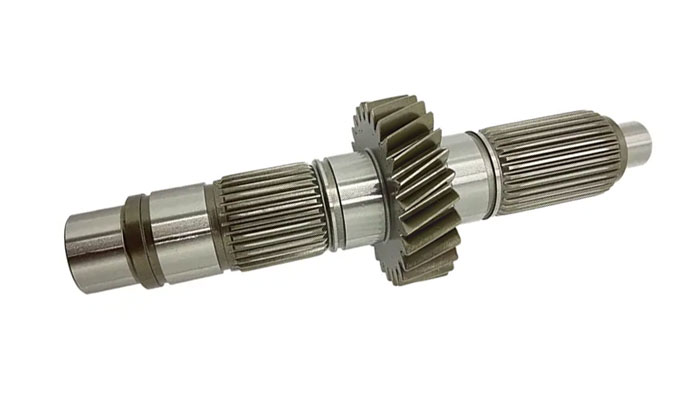
- Definition: A shaft that enables reverse motion in a system, usually found in transmissions.
- Structure: Typically includes gears to change the direction of rotation.
- Function: Reverses the direction of power or rotation.
- Characteristics: Used in transmission and reversing devices to alter direction.
5. Universal Shaft

- Definition: A shaft that transmits power and rotary motion between two shafts with angular flexibility.
- Structure: Consists of two shafts and a universal joint that can accommodate angular offsets.
- Function: Transfers power between shafts at various angles.
- Characteristics: Wide application, especially in automotive systems, allows power transmission over a broad range of angles.
6. Intermediate Shaft

- Definition: A shaft between the main shaft and other shafts, used to extend the power transmission path or transmit speed.
- Structure: Simple, often supported by bearings.
- Function: Connects the main shaft to the final transmission part in multi-stage systems.
- Characteristics: Enhances system flexibility, used in long-distance or complex transmissions.
7. Hollow Shaft
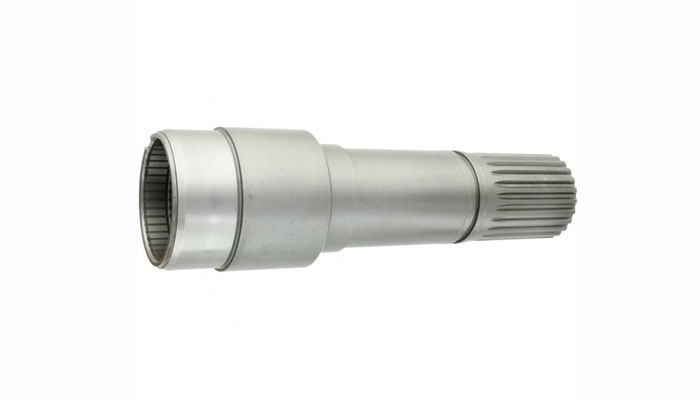
- Definition: A shaft with a hollow center, used to reduce weight or transmit fluids.
- Structure: Similar to solid shafts but with a central cavity.
- Function: Transmits power and can also carry fluids like liquids or gases.
- Characteristics: Lighter weight, lower inertia, and capable of multitasking, like fluid transmission.
5. Common materials used for transmission shafts
1. Carbon Steel
Carbon steel is used in the manufacture of common shafts and is characterized by high strength and low cost. common grades such as 45# and 50# are often used for standard mechanical and automotive drive shafts.
2. Alloy Steel
By adding elements like chromium, molybdenum, and nickel, alloy steel improves strength, wear resistance, and corrosion resistance. Grades such as 40Cr and 42CrMo are ideal for high-load, high-speed transmission systems, often used in automotive, aerospace, and heavy machinery applications.
3. Stainless Steel
Renowned for its excellent corrosion resistance, stainless steel is perfect for harsh environments where oxidation protection is essential. Stainless steels like 304 and 316 are commonly used in food processing, chemical equipment, and marine engineering.
4. Tool Steel
Tool steels are known for their hardness and wear resistance, making them suitable for high-load and high-stress environments. Materials such as D2 and H13 are often used for transmission shafts in applications requiring high strength and resistance to high temperatures.
5. Aluminum Alloys
Aluminum alloys are lightweight, corrosion-resistant, and easy to process, though they offer lower strength compared to other metals. Popular alloys like 6061 and 7075 are commonly found in aerospace, automotive, and racing drive systems where reducing weight is crucial.
6. Titanium Alloys
With their high strength, low weight, and exceptional corrosion resistance, titanium alloys are used in demanding applications where both strength and reduced weight are essential. These alloys are particularly favored for high-performance transmission shafts in aerospace and military fields.
7. Cast Iron
Easy to cast and cost-effective, cast iron offers good vibration damping, although it has relatively low strength. Materials like gray cast iron and ductile cast iron are suitable for mechanical systems that experience lower loads.
8. Composites
Composites combine lightweight properties with high strength, fatigue resistance, and corrosion resistance, often using fiber materials like carbon fiber or fiberglass. These materials are commonly applied in aerospace and high-performance race cars for their durability and weight-saving benefits.
6. Manufacturing Processes and Methods
CNC Machining

CNC machining is a high-precision process through computer numerical control equipment, which is suitable for transmission shafts with complex shapes and high precision requirements.
It enables precise dimensional control and surface treatment, and is particularly suitable for small-lot and customized production.
Molding
The forming process processes raw materials such as steel or aluminum rods into the initial shape of the transmission shaft using a die or pressing method, and is suitable for mass production.
Common molding methods include extrusion, forging, and stamping, which allow for efficient manufacturing of large-size transmission shafts.
Welding and Assembly
Welding and assembly process connects several parts into a whole by gas shielding welding or arc welding, etc. It is suitable for multi-segmented or combined transmission shafts.
This process can realize the assembly of complex structures, but the welding quality must be strictly controlled to avoid deformation and stress concentration.
Dynamic balancing test
Power Balancing Test adjusts the dynamic balance of the transmission shaft to ensure that it does not generate excessive vibration at high speeds, thus improving the stability of the transmission system.
This process can effectively eliminate vibration, reduce noise and extend the service life of the transmission shaft.
Surface treatment
Surface treatment includes heat treatment, plating, spraying and other processes designed to improve the wear resistance, corrosion resistance and fatigue resistance of the transmission shaft.
Common surface treatments include nitriding, chrome plating, and spraying, which can significantly extend the service life of a transmission shaft, especially in harsh operating environments.
Heat treatment
Heat treatment changes the hardness and strength of transmission shafts through heating, holding and cooling to improve their wear resistance and fatigue resistance.
Heat treatment methods such as quenching, tempering and normalizing are commonly used for transmission shafts with high loads or high speeds to enhance their load carrying capacity and work stability.
7. How do you customize transmission shafts to your needs?
When customizing transmission shafts, you need to consider the use environment and load requirements, and the main steps include:
Understanding the usage environment and load requirements:
Selecting the appropriate material and design according to the needs.
Determine the material and size specification:
Select the appropriate material according to the mechanical properties and size requirements.
Customization process and design optimization:
Work with the manufacturer to optimize the design to ensure the best balance of performance and cost.
Communication and Collaboration Points with Suppliers:
Ensure smooth execution of design and manufacturing processes.
If you have shaft parts that need to be machined to order, Allied Metal is a great choice! Allied Metal is a CNC machining manufacturer with over 20 years of experience and is very familiar with machining fixed shaft products.
With our craftsmanship and specialized background, we can ensure that each transmission shaft will meet your specific needs. Whether it’s a small production run or a large-scale customization, we offer flexible solutions that ensure the best standards of performance and quality.
8. Summary
Looking ahead, the future of transmission shafts lies in their lightweight design, intelligence, and high efficiency. With advancements in new materials and smart technologies, transmission shafts will deliver enhanced performance, lower energy consumption, and improved overall system efficiency. At the same time, the growing trend of customization will offer tailored solutions for diverse industries, driving further technological innovation.
